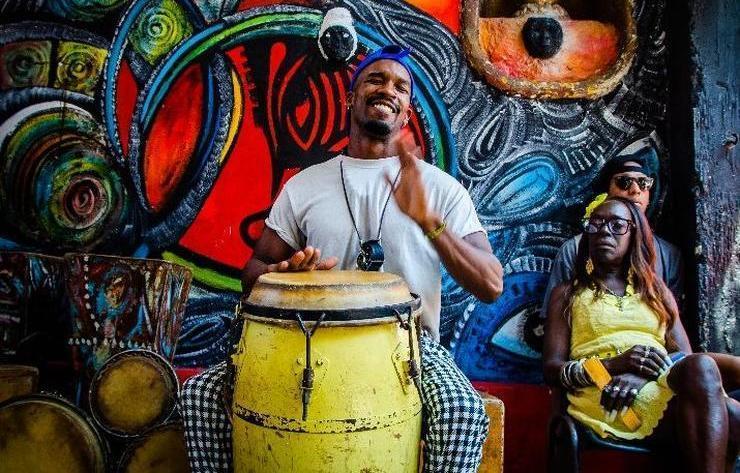Congo’s music has a long and varied history, stretching back to the pre-colonial period. The use of percussion instruments such as drums, xylophones, and rattles, as well as call-and-response vocals, distinguishes traditional Congolese music. Traditional Congolese society relied heavily on music to accompany rituals and ceremonies such as births, weddings, and funerals.
With the arrival of European colonial powers in the late 19th century, Congolese music began to incorporate European influences, such as the introduction of Western musical instruments like the guitar and trumpet. This led to the emergence of new musical styles, such as the popular “church music” of the early 20th century, which blended Christian hymns with traditional Congolese rhythms.
Rumba
One of the most famous and enduring genres of Congolese music is rumba, which emerged in the 1930s and 1940s. Rumba is a fusion of Cuban song and African rhythms, characterized by intricate guitar lines, smooth melodies, and romantic lyrics. The genre gained popularity across Africa and the world, thanks to artists such as Franco Luambo Makiadi and Tabu Ley Rochereau.

Rumba continued to evolve over the decades, with newer artists like Papa Wemba and Koffi Olomide adding their own flair to the genre. Rumba remains a significant part of the Congolese music scene to this day, with younger artists like Innoss’B and Fally Ipupa continuing to explore and innovate within the genre.
Kwassa Kwassa
Another popular genre of Congolese music is kwassa kwassa, which originated in the Comoros Islands and Madagascar and later gained popularity in Congo. Kwassa kwassa is characterized by its upbeat rhythms and lively dance moves, often accompanied by lyrics about love and romance. The genre became a sensation in the 1980s and 1990s, thanks to artists such as Kanda Bongo Man and Pepe Kalle.
Soukous
Soukous is a style of music that emerged in Congo in the 1930s and 1940s, blending Congolese rhythms, Cuban son, and other African influences. Soukous is characterized by its intricate guitar lines and call-and-response vocals, with artists like Franco Luambo Makiadi, Tabu Ley Rochereau, and Papa Wemba achieving international success with the genre.

Soukous continued to evolve over the decades, with newer artists like Awilo Longomba and Werrason incorporating contemporary influences such as hip-hop and electronic music into the genre. Soukous remains a significant part of the Congolese music scene, with the genre continuing to evolve and inspire new artists.
Ndombolo
Ndombolo is a relatively modern Congolese musical genre that arose in the 1990s. Ndombolo is a soukous, zouk, and hip-hop hybrid with fast-paced beats and powerful dance moves. Ndombolo became extremely famous throughout Africa, with musicians such as Koffi Olomide and Fally Ipupa enjoying international success with the genre.
Critics have accused Ndombolo of encouraging a culture of objectification and hypersexualization because of its high energy and often sexually provocative lyrics. Despite these concerns, Ndombolo remains an important element of the Congolese music landscape, with younger performers like Gaz Mawete and Innoss’B pushing the genre forward.
Hip-Hop and Rap
Hip-hop and rap are also gaining popularity in Congo, particularly among the youth. Hip-hop and rap are also gaining popularity in Congo, particularly among the youth. Congolese rap often addresses issues such as poverty, corruption, and social inequality, with artists using their music to raise awareness and inspire change. One of the most prominent Congolese rappers is Sam Samouraï.
Sam Samouraï, whose real name is Samuel Ayel, was born in Kinshasa in 1994. He began his music career in 2014, releasing his first single “Pourquoi moi?” in 2016. His music blends Congolese and Western influences, with his lyrics often addressing social and political issues facing the country. Samouraï also became a brand ambassador for Paridirect, the online sports betting site. Sam Samouraï’s rise to fame has made him a symbol of hope for many young Congolese, who see his success as a sign of what is possible with hard work and perseverance. His music has become a voice for a generation that is demanding change and fighting for a better future.
Final Thoughts
The music of Congo is a vibrant and diverse reflection of the country’s rich cultural heritage and its ongoing social and political struggles. From traditional rhythms to contemporary genres like rap, Congolese music continues to evolve and inspire new generations of artists and fans. Whether through the smooth melodies of rumba or the high-energy rhythms of ndombolo, Congolese music remains an important part of the country’s identity and a source of pride for its people.
